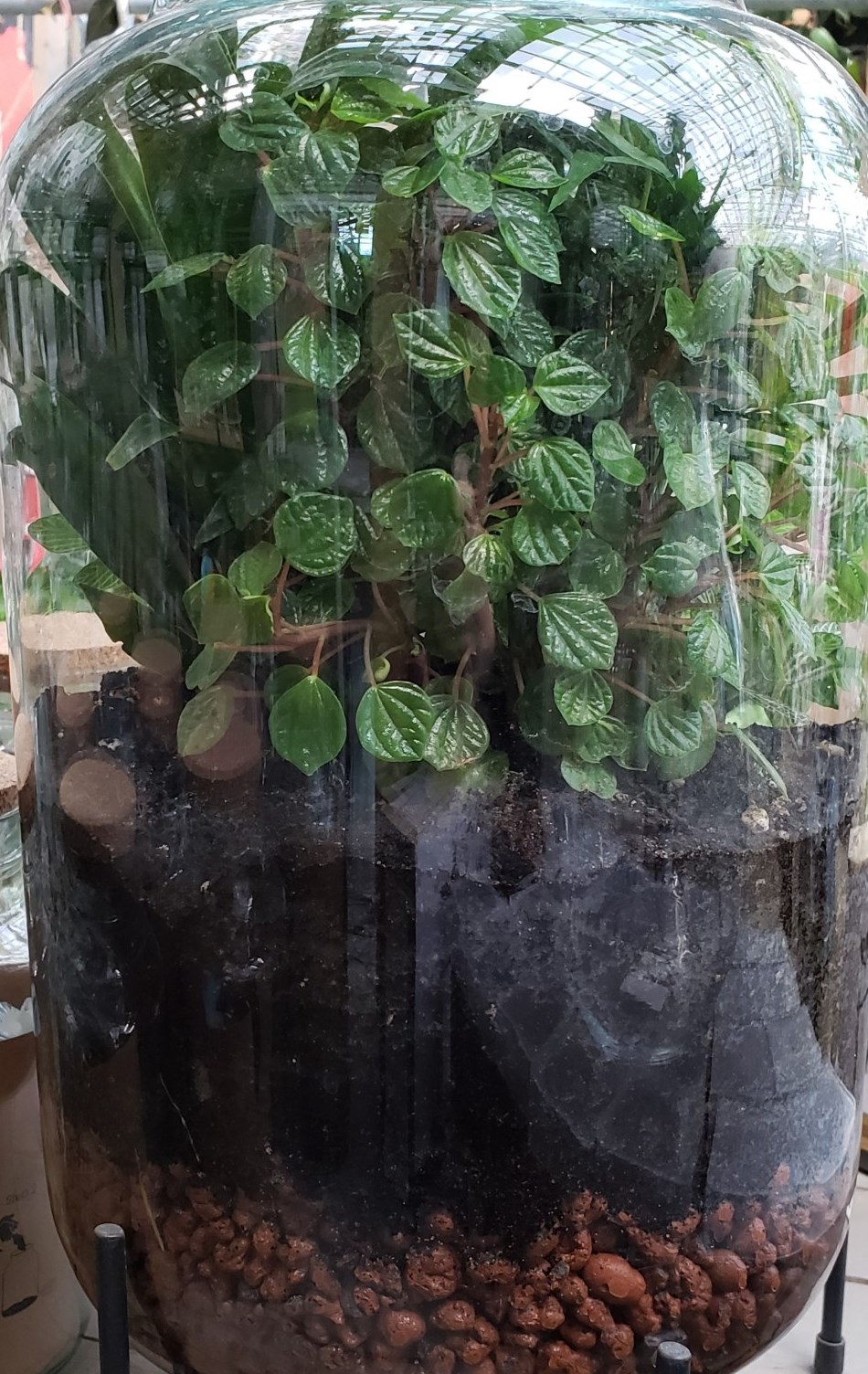A terrarium is a beautiful, self-contained, self-sustaining environment – one which emulates a greenhouse on a smaller scale. They operate on the same principle as the whole Earth runs on. The rain falls, then evaporates into the air, gathers in the clouds and then once again falls to the earth. It is an example of the beautiful cycle of nature. They are great choices for those who live with pets that like to chew up plants; for those looking for a beautiful living area and for those looking for the absolute perfect gift for a gardener.
First and foremost, it is important to select a container for the terrarium that is attractive to you – be a bit adventurous here and choose something interesting. It can be as small as a brandy snifter or as large as a huge aquarium. Spend a bit of time browsing to find any type of vessel that will hold both soil and water.
The terrarium began as a rather happy accident of pollution. In 1827, a doctor in London who was a bit of a plant fancier found his fern garden was being choked by the heavy pollution in London during the industrial age. At the same time, he was studying caterpillar cocoons in glass jars. One day, he noticed a tiny fern growing quite happily in one of the jars. Needless to say, he made the connection between safely growing his garden ferns in jars thus protecting them from the harsh realities of life in London at that time.
The lure of terrariums quickly spread as they proved to be a solution to keeping some of the more exotic tropical plants alive and well in the colder, less hospitable climate of England. Ideally, the best terrariums are filled with plants that need less light – or what we would typically call “shade plants”. Choosing the right plants is essential as in an enclosed environment, it is necessary to ensure that all plants have similar cultural needs. Other than that, your imagination is really the only limiting factor!
Begin by lining the bottom of the terrarium with a drainage layer that is needed to help keep the roots from rotting in a very humid environment. Next, layer crushed charcoal lightly covered with a thin layer of pebbles or gravel. Following next is a layer of sphagnum moss whose purpose is to prevent the soil from sifting into the bottom drainage layer. The top is a layer of soil or media – ideally a potting soil mix laced with sand. To make your own media use two parts soil to one-part coarse sand and one-part compost. This soil layer is typically where you create your landscape by creating hills, terraces and hollows.
If you are planning to include a critter or two, ensure you are also creating an environment that will be conducive to the survival of the critter of choice. Consult a knowledgeable pet person or veterinarian to ensure the environment will fit.
Next is the step where you add the plants. Place them in such a way that they will be attractive from all sides that are to be viewed. Plant and ensure the soil is firmly placed around the roots. Keep an eye on the terrarium to ensure all needs are being met. Be careful not to overwate. A well-planned terrarium will ensure years of “green” happiness.
Good luck.
Hanbidge is the Lead Horticulturist with Orchid Horticulture. Find us at www.orchidhort.com; by email at [email protected]; on facebook @orchidhort and on instagram at #orchidhort.
Tune into GROW Live on our Facebook page https://www.facebook.com/orchidhort or check out the Youtube channel GROW https://www.youtube.com/channel/UCzkiUpkvyv2e2HCQlFl0JyQ?

.JPG;w=120;h=80;mode=crop)

.jpg;w=80;h=120;mode=crop)
